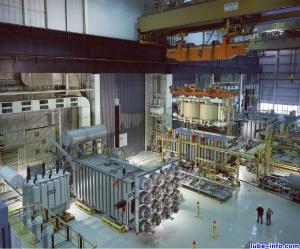Sparking the Transformer Oil Market
2012-06-08 来源:润滑油情报网

As the economy recovers from the recession years, the electrical oil market is expected to grow. Even before the U.S. market gains momentum, naphthenic base oil refineries — the source of most transformer oils — could see opportunities in global emerging markets, Mike Burnett of process oil marketer Renkert Oil told Lubes’n’Greases.
Together, North and
The largest naphthenic volumes used as electrical oil for the
As the world’s largest naphthenic base oil refiner, Ergon has a big stake in this market segment. “We see competition primarily from traditional suppliers who are working diligently to add production capacity,” said Craig Busbea, Ergon’s marketing vice president for North and
Three years ago, a booming
The market is still feeling the pain, said Ryan Eberly, director of sales and marketing at naphthenic producer San Joaquin Refining in
“This year the demand has significantly dropped and we’ve been forced to export around 20 percent of our total electrical oil production to countries such as
Electrical oil demand primarily is influenced by the commercial marketplace for medium- and high-voltage transformers used for building new power stations or upgrading existing ones, and by expansion of the residential power grid, these experts said. “I don’t think that it is directly proportional , but when the construction market is down, the demand for transformer oil is down as well — they are definitely tied together,” Eberly commented.
Geographically, the biggest
Growth of the insulating oil market was hobbled by the financial crisis and subsequent recession. The subprime mortgage crises and crash of residential development in 2008 dragged the transformer oil market down, and it is still recovering from the blow. “Since the end of 2009 we observe signs of recovery,” Burnett commented. “The industrial portion of the market was affected by the slowdown too, but not as severe as the residential.”
Some future growth could be spurred by recent legislation that prods
On the other hand, electrical oil demand is already growing rapidly in the emerging markets of
Ergon likewise is optimistic about the growing demand for naphthenics. “Our challenge is to increase production capacity at a rate that keeps up with the growing demand,” Busbea remarked. “Today we see a global balance, but would love to have a reason to add even more capacity.”
The transformer oil market is driven by specifications, not simply by the type of oil produced. The refinery process determines the oil’s electrical, physical and chemical properties, but OEMs call the shots. They require oils to have good purity, high dielectric strength, and low viscosity for cooling. Oxidative and thermal stability are also important for long product life, and compatibility with other transformer materials is a must.
“Naphthenics were used in the past primarily for their low pour-point viscosity properties. Now, with API Group II base oil technologies, some companies like Petro-Canada are producing excellent paraffinic transformer oil,” Burnett explained. “Paraffinics are used mostly for the heavy electrical equipment that operates in warm regions with no need of low pour requirements.”
And there could be other alternatives someday if the market needs it. “There are some companies on a very small scale producing bio oils for transformers. Due to some issues, they have not found wide acceptance, but in the future they could be another source of supply.”
Specifications top the list when a buyer asks for this product, Eberly said, with the key spec being the ASTM D3487-09 standard for mineral insulating oils. This document divides the fluids into two main types: Type I transformer oils — with no additives — for apparatus where normal oxidation resistance is required, and Type II oils which can be additized if greater oxidation resistance is needed.
II “
There are also a few European specifications, from the International Electrotechnical Commission and the British Standards Organization (BS-148), and some of these also do not allow use of additives. “You don’t put additives in the transformer oil to improve its quality. It’s based on the specification stipulated by the utility company and the oil producer ,” Burnett emphasized. “The specifications are going to limit what you can do in a blending plant and what types of additives you may or may not use to improve pour point or flash point. It’s a very specification-driven business and we don’t consider it as a commodity.”
Transformer oil is definitely not a commodity in the traditional sense of the word. Although some product is sold through distributors and marketers, the greatest volume goes on a direct basis from the refinery gates to the electrical distributor or transformer producer as the buyer. “You don’t see as much trading here, although there are some traders who buy and sell even electrical oil,” Burnett asserted.
Insulating oil is a complex product, agreed Eberly. “It really requires an expert to sell it and proper technicians, laboratories and equipment to handle it. Refineries have the technical expertise and capability to know what’s going to work and why,” he said, adding that it’s not like the pale oil that meets only five or six requirements and usually is sold for lubricant blending.
In general, these experts insisted that the insulating oil market is improving and that they expect demand to exceed supply in the coming years, just as it did before the economic crisis. “Whenever demand is higher than supply, we will look to increase capacity as other majors, like Ergon, already did,” Eberly concluded.







 粤公网安备 44010402003386号
粤公网安备 44010402003386号